Wenda Su
SKIN DISORDERS
SKIN DISORDERS
916-818-7318
Whether Western medicine or Chinese medicine, there are many ways to treat skin diseases. Western medicine mostly gives anti-allergic drugs or combined glucocorticoid to treat, and gives ointment for surface treatment. But still has many patients who can not be cured or have repeated attacks. Traditional Chinese medicine has an advantage over Western medicine in treating skin diseases. It combines the overall view of the human body and local view, adjusts the functions of the internal organs of the human body and exorcises evils, so that the body can achieve a balance of yin and yang, thereby curing skin diseases. Chinese medicine treats skin diseases’ essence, and Western medicine treats skin diseases’ phenomena. Many skin diseases that are not well-treated by Western medicine are cured by the treatment of traditional Chinese medicine.
My clinic provides unique skin diseases treatment, Drinking Chinese herbs and providing Chinese herbs for external application cure many skin diseases that are difficult for treatment.
Welcome for consultation, telephone: 916-818-7318.
Urticaria
 Hives (urticaria) are red, itchy welts that result from a skin reaction. The welts vary in size and appear and fade repeatedly as the reaction runs its course. The condition is considered chronic hives if the welts appear for more than six weeks and recur frequently over months or years.
Hives (urticaria) are red, itchy welts that result from a skin reaction. The welts vary in size and appear and fade repeatedly as the reaction runs its course. The condition is considered chronic hives if the welts appear for more than six weeks and recur frequently over months or years.
Eczema
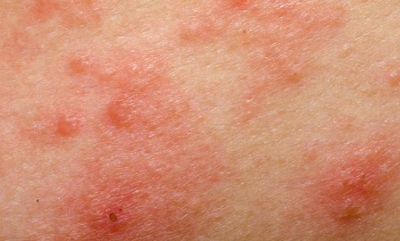
The main symptom is itchy skin. Skin is also often dry. Scratching makes the skin red, chafed and thick.
Acne
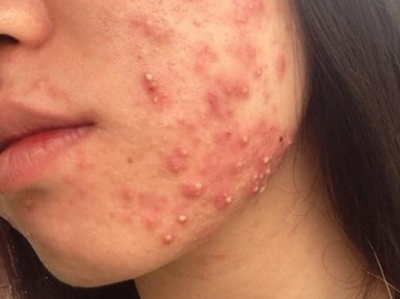
Acne is a chronic, inflammatory skin condition that causes spots and pimples, especially on the face, shoulders, back, neck, chest, and upper arms.
Shingles
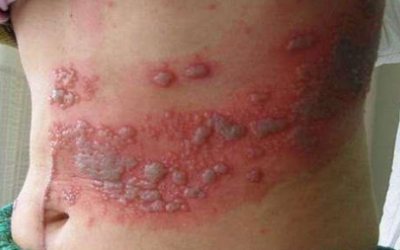
Shingles is a viral infection that causes a painful rash. Although shingles can occur anywhere on your body, it most often appears as a single stripe of blisters that wraps around either the left or the right side of your torso. Shingles is caused by the varicella-zoster virus — the same virus that causes chickenpox.
Psoriasis
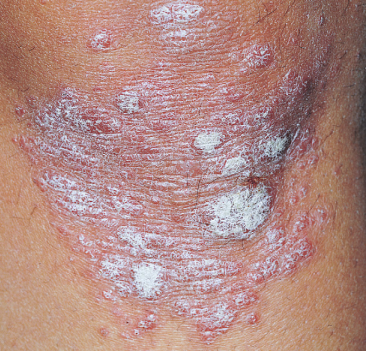
Psoriasis is a skin disorder that causes skin cells to multiply up to 10 times faster than normal. This makes the skin build up into bumpy red patches covered with white scales. They can grow anywhere, but most appear on the scalp, elbows, knees, and lower back.
Pityriasis Rosea

Pityriasis rosea is a common skin condition characterized by a scaly rash that sweeps outward like the branches of a pine tree.
Pityriasis Rubra Pilaris

Pityriasis rubra pilaris (PRP) is the name given to a group of rare skin disorders that present with reddish-orange coloured scaling patches with well-defined borders. They may cover the entire body or just parts of the body such as the elbows and knees, palms and soles.
Chloasma
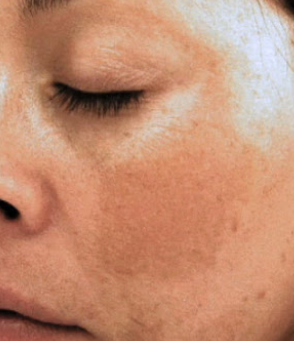
Chloasma is a required hypermelanosis of sun-exposed areas occurred during pregnancy and it can affect 50-70% of pregnant women. It presents as symmetric hyperpigmented macules, which can confluent or punctuate. The most common locations are the cheeks, the upper lip, the chin and the forehead.
Pemphigus Higus

Pemphigus is a disease that causes blisters and sores on the skin or mucous membranes, such as in the mouth or on the genitals.
Leucoderma

Leucoderma, sometimes known as vitiligo, is a rare skin disease characterized by white spots and patches. The white patch or spot is called leucoderma, and when it occurs without any preceding disease it is called Vitiligo. Leucoderma is a symptom of vitiligo. Leucoderma in literal term means white skin.
Erythema Nodosum
 Erythema nodosum is a type of skin inflammation that is located in a part of the fatty layer of skin. Erythema nodosum results in reddish, painful, tender lumps most commonly located in the front of the legs below the knees. The tender lumps, or nodules, of erythema nodosum range in size from a dime to a quarter.
Erythema nodosum is a type of skin inflammation that is located in a part of the fatty layer of skin. Erythema nodosum results in reddish, painful, tender lumps most commonly located in the front of the legs below the knees. The tender lumps, or nodules, of erythema nodosum range in size from a dime to a quarter.
Rosacea
 Rosacea usually causes a persistent redness in the central part of your face. Small blood vessels on your nose and cheeks often swell and become visible. Swollen, red bumps. Many people with rosacea also develop pimples on their face that resemble acne. These bumps sometimes contain pus
Rosacea usually causes a persistent redness in the central part of your face. Small blood vessels on your nose and cheeks often swell and become visible. Swollen, red bumps. Many people with rosacea also develop pimples on their face that resemble acne. These bumps sometimes contain pus
Tinea
 Tinea is the name of a group of diseases caused by a fungus. Types of tinea include ringworm, athlete's foot and jock itch. These infections are usually not serious, but they can be uncomfortable. You can get them by touching an infected person, from damp surfaces such as shower floors, or even from a pet.
Tinea is the name of a group of diseases caused by a fungus. Types of tinea include ringworm, athlete's foot and jock itch. These infections are usually not serious, but they can be uncomfortable. You can get them by touching an infected person, from damp surfaces such as shower floors, or even from a pet.
Neurodermatitis

Neurodermatitis is a skin condition characterized by chronic itching or scaling. You'll notice raised, rough, itchy areas of skin — typically on the neck, wrists, forearms, legs or anal region. Neurodermatitis is a skin condition that starts with an itchy patch of skin. Scratching makes it even itchier.
Photosensitivity Dermatitis
 Photosensitivity dermatitis is the name given to an eczematous eruption arising in response to exposure to electromagnetic radiation. It is most commonly provoked by exposure to sunlight. The reaction may relate to UVB, UVA and/or visible light. It arises in all skin types.
Photosensitivity dermatitis is the name given to an eczematous eruption arising in response to exposure to electromagnetic radiation. It is most commonly provoked by exposure to sunlight. The reaction may relate to UVB, UVA and/or visible light. It arises in all skin types.
Alopecia Areata
 Alopecia areata is a common autoimmune skin disease, causing hair loss on the scalp, face and sometimes on other areas of the body.
Alopecia areata is a common autoimmune skin disease, causing hair loss on the scalp, face and sometimes on other areas of the body.
Seborrheic dermatitis
 Seborrheic dermatitis is a common skin disease that causes an itchy rash with flaky scales. It causes redness on light skin and light patches on darker skin. It's also called dandruff, cradle cap, seborrhea, seborrheic eczema, and seborrheic psoriasis.
Seborrheic dermatitis is a common skin disease that causes an itchy rash with flaky scales. It causes redness on light skin and light patches on darker skin. It's also called dandruff, cradle cap, seborrhea, seborrheic eczema, and seborrheic psoriasis.
Scleroderma
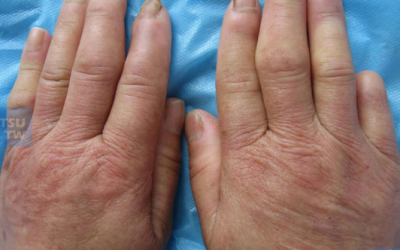 Scleroderma, or systemic sclerosis, is a chronic connective tissue disease generally classified as one of the autoimmune rheumatic diseases. The word “scleroderma” comes from two Greek words: “sclero” meaning hard, and “derma” meaning skin. Hardening of the skin is one of the most visible manifestations of the disease.
Scleroderma, or systemic sclerosis, is a chronic connective tissue disease generally classified as one of the autoimmune rheumatic diseases. The word “scleroderma” comes from two Greek words: “sclero” meaning hard, and “derma” meaning skin. Hardening of the skin is one of the most visible manifestations of the disease.
Behcet syndrome
 Behcet's (beh-CHETS) disease, also called Behcet's syndrome, is a rare disorder that causes blood vessel inflammation throughout your body. The disease can lead to numerous signs and symptoms that can seem unrelated at first. They can include mouth sores, eye inflammation, skin rashes and lesions, and genital sores.
Behcet's (beh-CHETS) disease, also called Behcet's syndrome, is a rare disorder that causes blood vessel inflammation throughout your body. The disease can lead to numerous signs and symptoms that can seem unrelated at first. They can include mouth sores, eye inflammation, skin rashes and lesions, and genital sores.
dermatomyositis

Dermatomyositis (dur-muh-toe-my-uh-SY-tis) is an uncommon inflammatory disease marked by muscle weakness and a distinctive skin rash. The condition can affect adults and children. In adults, dermatomyositis usually occurs from the late 40s to early 60s. In children, it most often appears between 5 and 15 years of age.
systemic lupus erythematosus
 Systemic lupus erythematosus (SLE) is an autoimmune disease. In this disease, the immune system of the body mistakenly attacks healthy tissue. It can affect the skin, joints, kidneys, brain, and other organs.
Systemic lupus erythematosus (SLE) is an autoimmune disease. In this disease, the immune system of the body mistakenly attacks healthy tissue. It can affect the skin, joints, kidneys, brain, and other organs.
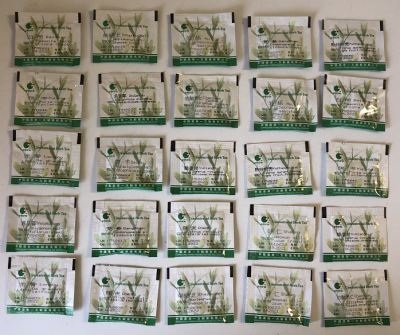
Location
7275 E. Southgate Drive Suite 303
Sacramento, CA 95823
TEL: 916-818-7318
E-mail:
peacetcmacupuncture@gmail.com
www.peacetcmacupuncture.com
